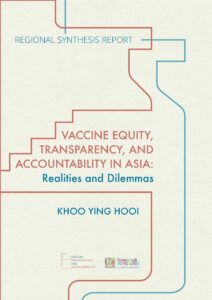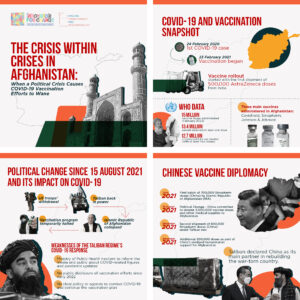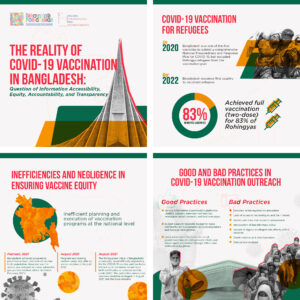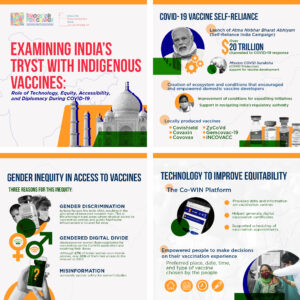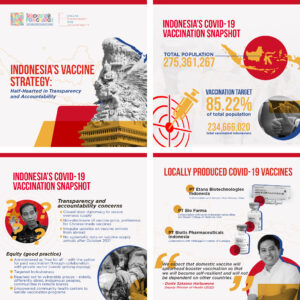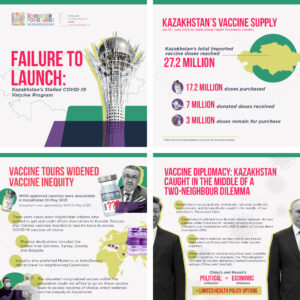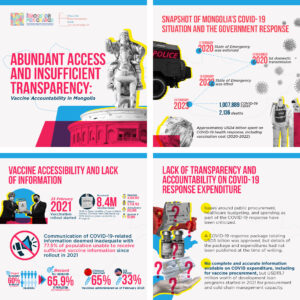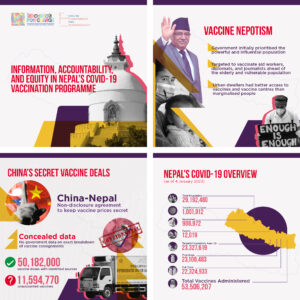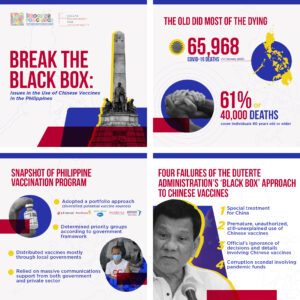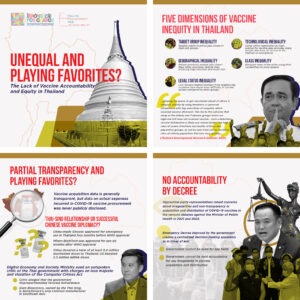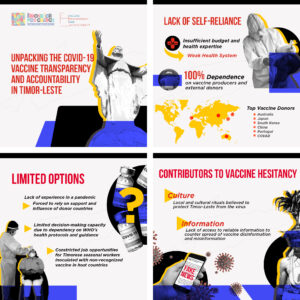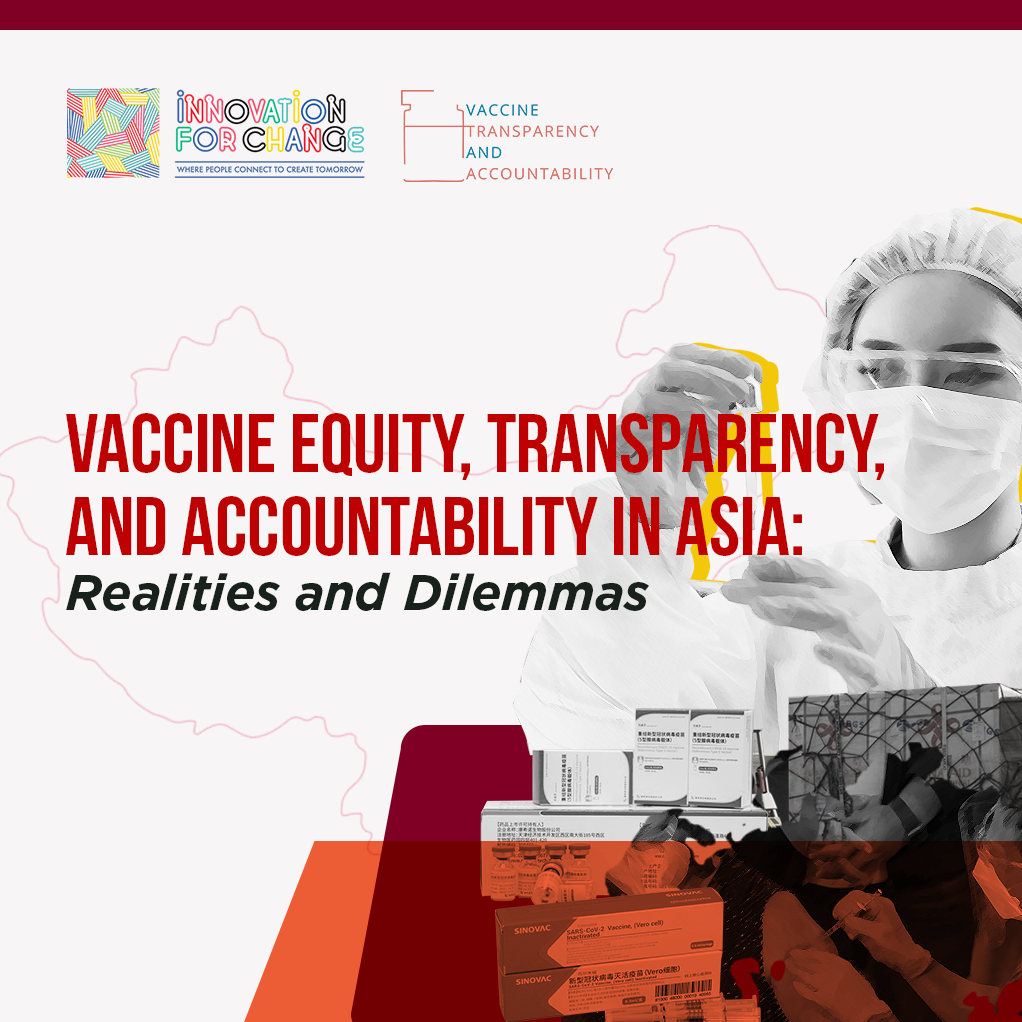
VACCINE EQUITY, TRANSPARENCY, AND ACCOUNTABILITY IN ASIA: Realities and Dilemmas contains 11 country reports across three subregions in Asia – Southeast Asia, South Asia, and Central Asia. It examines trends and similarities across focus countries while capturing each country’s unique experiences and situations.
Using primary data — interviews and focus group discussions (FGD) — and secondary data, the 11-country research investigates vaccine information accessibility, equity, transparency, and accountability of vaccine procurement during the COVID-19 pandemic. It also takes a special look at how COVID-19 vaccines made by China-based manufacturers have figured in the issues of vaccine access and equity, China’s influence, and how its vaccine diplomacy works in each of the researched countries.
READ or DOWNLOAD the report SYNTHESIS here.
Synthesis highlights
The AFGHANISTAN report examines the country’s response to the COVID-19 pandemic covering both administrations of the previous Islamic Republic of Afghanistan (IRA) and the current Taliban rule referred to as Islamic Emirate of Afghanistan. There is particular focus on the implementation of the national vaccination plan, access to vaccine information, and looking into the transparency of vaccine procurement, distribution, allocation, vaccine equity, and Chinese vaccine diplomacy. This series of infographics highlights some of the key research findings.
READ the Afghanistan report here. 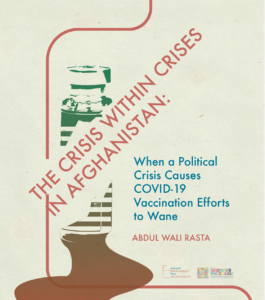
The report explores the state of COVID-19 vaccination in BANGLADESH to assess information accessibility, equity, accountability, and transparency pertinent to the vaccines and the vaccination rollout. Although Bangladesh started administering COVID-19 vaccines in early 2021, the vaccination target rates remained startlingly low for various reasons, including the issue of vaccine inequity often faced by least developed countries. The hindrances to the equitable distribution of vaccines all over Bangladesh have been a matter of concern for the past two years and remain a crucial topic to discuss. While the inclination towards vaccine self-sufficiency awaits, the focus shifts to ensuring that the dependence on foreign vaccine imports does not become a means to serve political or third-party interests over prioritizing public health. This series of infographics highlights some of the key research findings.
READ the Bangladesh report here. 
As a non-manufacturing country of COVID-19 vaccines, CAMBODIA has taken more precautionary administrative and non-pharmaceutical measures to contain the virus. Cambodia received vaccines from various countries via bilateral deals and through the COVAX mechanism, while Cambodia only purchased vaccines from China. The government has grown more reliant on China in the form of technical, logistical, technological, pharmaceutical, and medical support in its efforts to combat COVID-19 since the early stages of the pandemic. While ties with Western countries have not been so good during the past years, COVID-19 has pushed Cambodia even more to regard China as the only viable and realistic ally and a long-term counterpart in development and investment projects. This series of infographics highlights some of the key research findings.
READ the Cambodia report here. 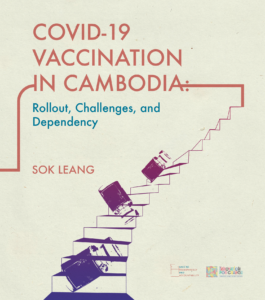
The Government of INDIA launched its vaccination programme, in phases, starting 16 January 2021. Under its Atma Nirbhar Bharat Abhiyan (Self Reliance India Campaign), the government, with the aim of vaccinating 1.4 billion citizens, supported the development of indigenous vaccines, including Covaxin (by Bharat Biotech) and Covishield (Serum Institute of India), which emerged as critical protection providers in India against the virus. India’s self-reliance enabled accessibility, affordability, and scalability of vaccines, which in turn, resulted in India’s ability to administer over two billion doses within the first year of the vaccination programme. This is still regarded as a remarkable feat for a developing country. India’s COVID-19 vaccination programme adopted a prioritisation strategy and developed technology-driven platforms like Co-WIN (COVID Vaccine Intelligence Network) to ensure equitable distribution of vaccines. However, these efforts bore unequal results as vaccination differed across states and genders due to vaccine hesitancy, public health infrastructure, and transparency and accountability issues. This series of infographics highlights some of the key research findings.
READ the India report here. 
The report discusses how INDONESIA has, so far, achieved a modest result from its ambitious national COVID-19 vaccination programs. In running the national program, Indonesia made two impressive moves in two regards. One, it managed to disclose a fairly comprehensive national data record on the vaccination progress – by sub-national jurisdiction, age groups, and certain professions – though it still lacks data on vulnerable groups. Two, Indonesia has also co-developed three local COVID-19 vaccines, two with international collaborators, and another one wholly developed from the partnership of a local university and a local pharmaceutical company. This series of infographics highlights some of the key research findings.
READ the Indonesia report here. 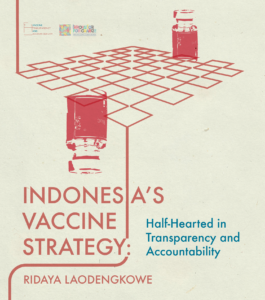
The COVID-19 situation and subsequent vaccine rollout process in KAZAKHSTAN demonstrated a lackluster government response. In this report, we analyse vaccine equity from the perspective of a lack of decision-making equity, as well as a lack of international vaccine access equity. In assessing the procurement, production, and rollout of the government’s vaccination program, we find a lack of transparency in the vaccine procurement process, geopolitical limitations of the two-neighbour dilemma, and the fragility of the domestic health system to respond to global pandemic scenarios. This series of infographics highlights some of the key research findings.
READ the Kazakhstan report here. 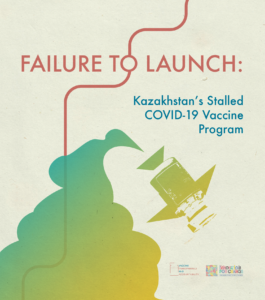
This report investigates MONGOLIA‘s vaccination strategy and its implementation as part of the Vaccine Transparency and Accountability project carried out by the Innovation for Change – East Asia Hub in several Asian countries. The research covers three main components – assessing vaccine information accessibility, vaccine equity, and vaccine transparency and accountability. The report highlights some unique COVID-19-related experiences of Mongolia such as on vaccine diplomacy, early reliance on Chinese vaccines, vaccine information limitation, and initial vaccine hesitancy, while providing general overview of the COVID-19 and pandemic response context. This series of infographics highlights some of the key research findings.
READ the Mongolia report here. 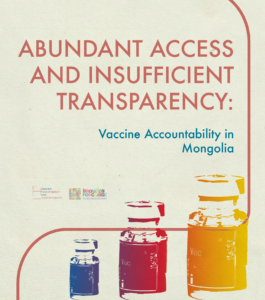
As a non-COVID-19 vaccine manufacturing country, NEPAL is completely dependent on the generosity of its vaccine producing neighbors, diplomatic partners, and vaccine alliances to secure its vaccine supply. While it was one of the first countries in South Asia to start a national vaccination drive, it witnessed numerous hiccups throughout the campaign. The pandemic was marred with corruption, lack of transparency, misinformation, and unequal treatment among its citizens. This research looks at Nepal’s successes and failures with COVID-19 vaccines with a special focus on the country’s marginalized communities – a crucial population to incorporate to achieve vaccine equity. With the majority of the population now vaccinated, it may appear that the vaccination campaign has been a success, but there are improvements that the government can address when it comes to transparency, accountability, and service delivery, especially in rural areas. This series of infographics highlights some of the key research findings.
READ the Nepal report here. 
From 2020 to 2022, the PHILIPPINES experienced four COVID-19 waves. In terms of deaths, each was worse than the previous one—until the fourth, which started after vaccinations had reached a critical mass. The drop in peak deaths was dramatic. Today, over 73 million individuals (about 94% of the target population) are fully vaccinated. The vaccination program may be deemed a qualified success—but the Philippine government’s secretive handling of Chinese-made vaccines was deeply problematic. The black-box approach (which allowed special treatment for Chinese vaccines, among other anomalies) proved to be a failure in transparency and accountability. This series of infographics highlights some of the key research findings.
READ the Philippines report here. 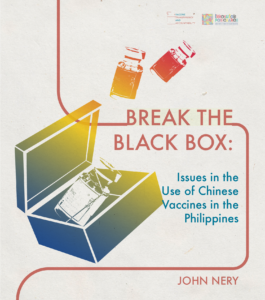
THAILAND’s COVID-19 vaccination coverage got off to a relatively slow start – there had been three infection outbreaks in the country before the nationwide vaccination drive kicked off in June 2021. As of mid-February 2023, Thailand’s two-dose coverage has stalled at around 77.6%, while booster dose coverage has stalled at 38.5%. These figures belie significant vaccine inequality covering five dimensions: target group inequality, technological inequality, geographical inequality, class inequality, and ethnic inequality. China’s influence was seen in the 3.4 million doses of COVID-19 vaccine donations (the largest among all country donors), the expediency of vaccine approvals, and large orders. Moderna, mRNA vaccine which boasts the highest efficacy rate, was relegated to the status of “alternative vaccine” outside the government’s program which people have to pay for. Meanwhile, large orders of AstraZeneca and favorable terms point to preferential treatment for Siam Bioscience, the company’s contract manufacturer owned by the current monarch. This series of infographics highlights some of the key research findings.
READ the Thailand report here. 
There are three COVID-19 vaccines currently available in TIMOR-LESTE – AstraZeneca, Pfizer, and Sinovac – which were primarily obtained from three major donors – the United States, Australia, and China. By 13 March 2023, around 60.53% of the eligible population had been fully vaccinated (administered with two doses). Despite this seemingly positive progress, several obstacles arose behind the scenes. This study, therefore, attempts to unpack the level of transparency and accountability of vaccine procurement and inoculation in Timor-Leste. Access to information, for example, remains a public concern. Enforcing mandatory vaccination policies as a pre-condition for the public to access public services, jobs, subsidies, and other social services is also considered a government failure in its pandemic response, as these policies are enforced without obtaining people’s consent. This series of infographics highlights some of the key research findings.
READ the Timor-Leste report here. 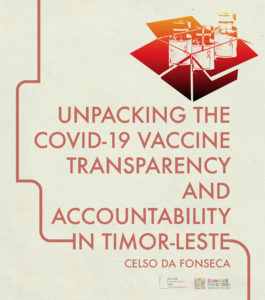
You may also READ or DOWNLOAD the FULL REPORT here.
Email [email protected] for inquiries about this report.
This work is available under the Creative Commons Attribution – ShareAlike 4.0 International license (CC BY-SA 4.0). By using the content of this publication, you agree to be bound by the terms of this license. This CC license does not apply to non-Innovation for Change – East Asia copyright materials in this publication. If the material is attributed to another source, please contact the copyright owner or publisher of that source for permission to reproduce it. Innovation for Change – East Asia cannot be held liable for any claims that arise as a result of your use of the material.
